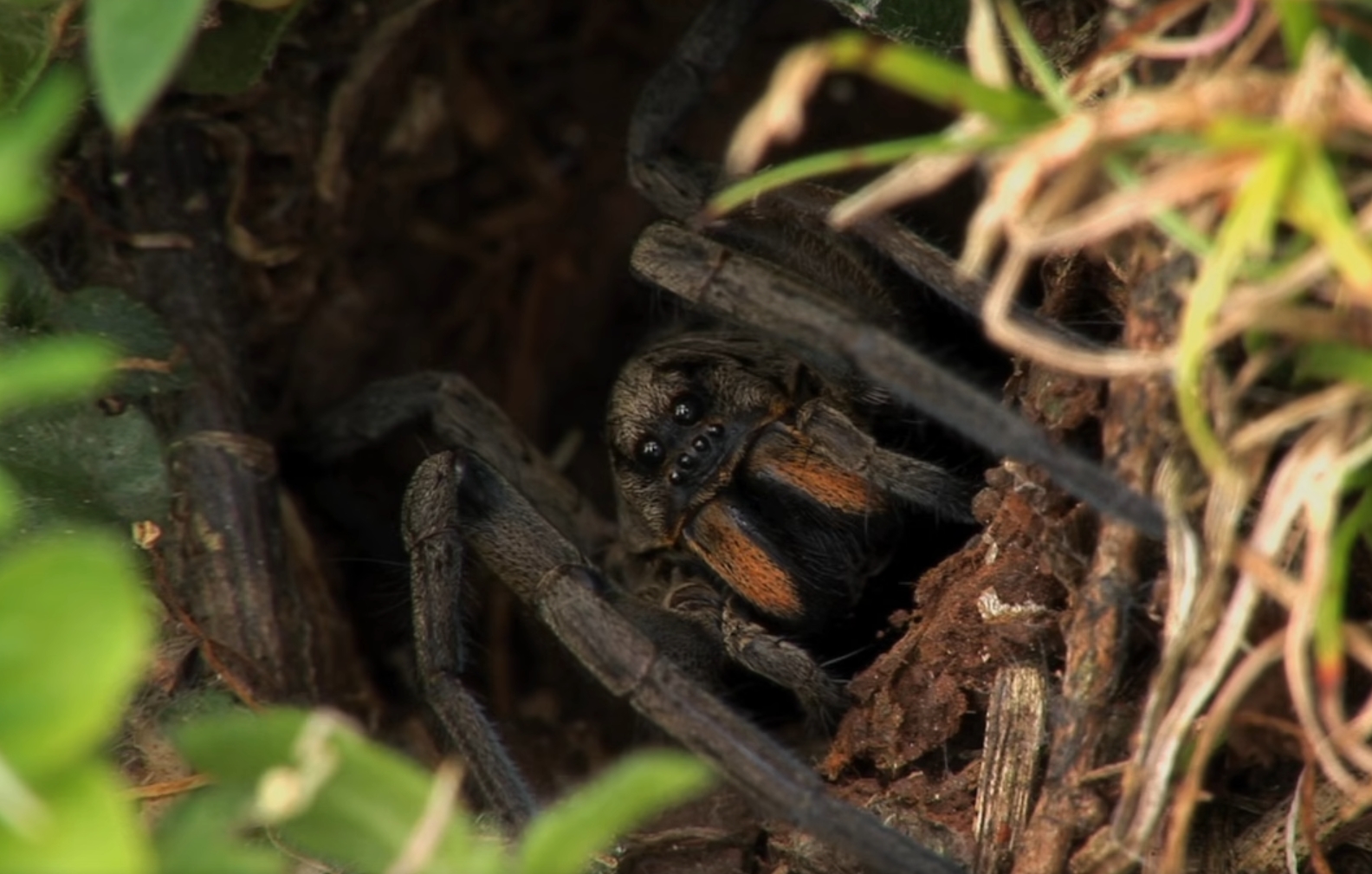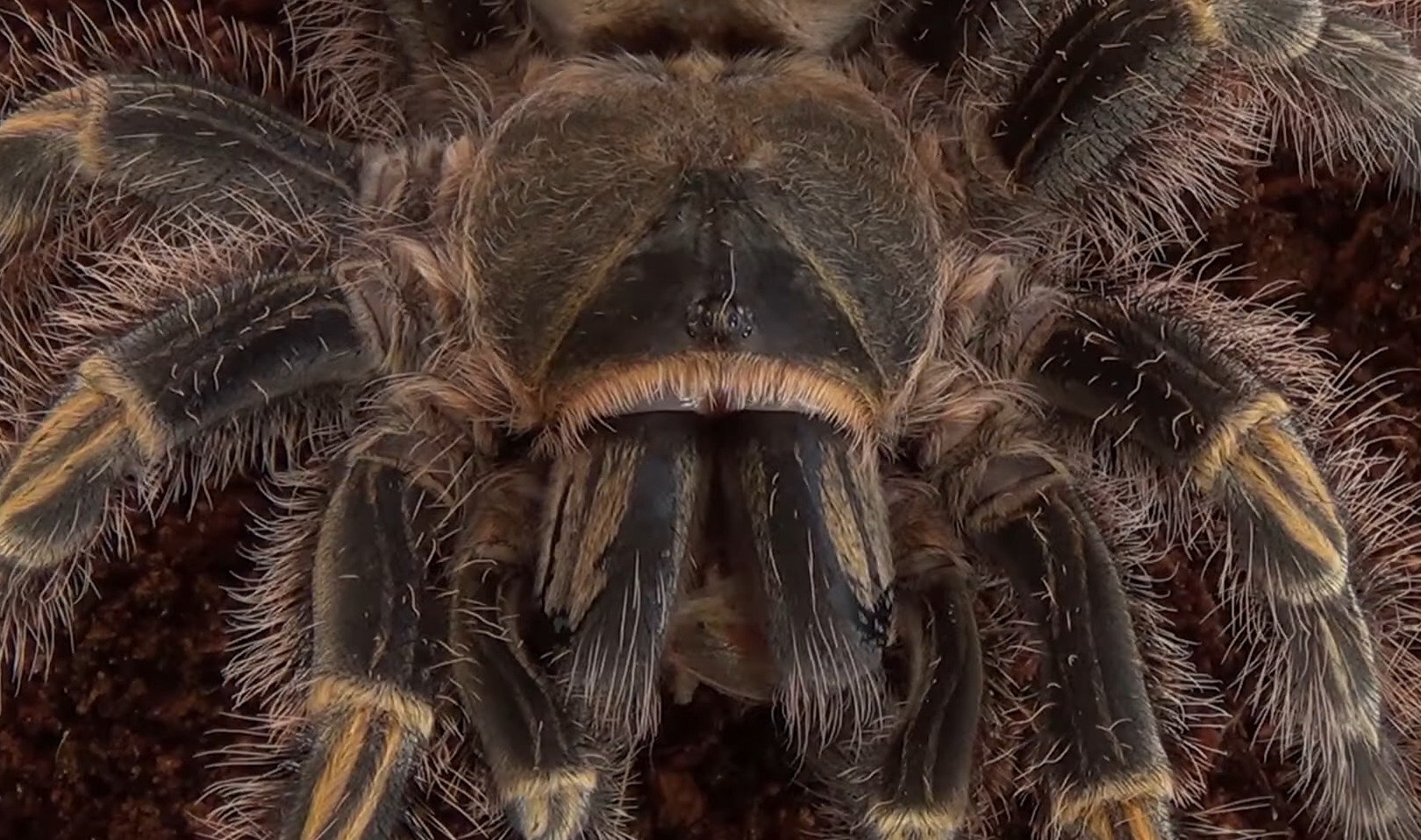Wolf spiders are fascinating creatures. Found all over the world and predominantly common in North America, these mostly nocturnal hunters have evolved to excel at chasing down their prey, unlike their web-spinning cousins.
What’s on the Menu for Wolf Spiders?
Contents
So, you’re curious about the dining habits of the formidable wolf spider, huh? Let’s delve into their peculiar palate and find out just how diverse their menu can be. Think of a wolf spider like the lion of the spider world – they are daring hunters that eat a wide variety of creatures. But do they really eat other spiders? Or centipedes? Or even… frogs?
Let’s embark on a culinary journey of the wolf spider’s diet with the following comparison table:
| Prey | Does Wolf Spider Eat? | Fun Fact |
|---|---|---|
| Brown Recluse | Yes | Wolf spiders and brown recluses are natural enemies in the wild. |
| Other Spiders | Yes | They’re known to have other spiders on their menu. |
| Centipedes | Rarely | Centipedes are usually the predators, not the prey. |
| Black Widows | Yes | In a world of eat or be eaten, wolf spiders do not shy away from black widows. |
| Frogs | Occasionally | If a frog is small and vulnerable enough, a wolf spider might take the chance. |
| Roaches | Yes | Roaches make up a significant part of their diet. |
| Ants | Yes | They’re small and easy prey for a wolf spider. |
| Mice | No | Mice are typically too large for a wolf spider to tackle. |
| Millipedes | Rarely | Their hard exterior makes them a tough meal. |
| Crickets | Yes | Crickets are like the fast food of the spider world. |
| Ladybugs | Yes | Ladybugs are another common item on the wolf spider’s menu. |
| Ticks | Rarely | They don’t generally eat ticks, but will if food is scarce. |
| Woodlice | Yes | Soft and small, woodlice make an easy meal. |
| Rolly Pollies | Yes | Same as woodlice, they’re an easy snack. |
| Lizards | Occasionally | Only if the lizard is small enough for the spider to subdue. |
| Worms | Yes | They do not shy away from a juicy worm. |
| Earwigs | Yes | Earwigs make up part of their diverse diet. |
| Flies | Yes | Flies are often on the wolf spider’s hit list. |
| Babies | Yes, in extreme cases | Unfortunately, if food is extremely scarce, they may resort to cannibalism. |
| Grass | No | Wolf spiders are strictly carnivorous. |
Isn’t it fascinating, albeit a bit creepy, how wide-ranging a wolf spider’s diet can be? From tiny ants to surprisingly large frogs, the wolf spider isn’t a fussy eater. It’s as if they walk into the vast wilderness of nature and say, “What’s on the menu today?”
A Closer Look at Wolf Spiders
With large eyes, hairy bodies, and a color palette ranging from brown to black, wolf spiders are truly a sight to behold. But why are they called “wolf” spiders? It’s not because they hunt like wolves; it’s because they live near each other, mimicking the pack life of wolves.
“The first time I photographed a wolf spider, I was struck by its beauty. It was like capturing a fierce, wild creature in miniature,” recounts wildlife photographer, Jane Doe.
However, unlike wolves, these spiders prefer open areas where they can easily hide when threatened. They’re speedy creatures and will only bite when provoked or stepped on. But don’t be too alarmed – their bites aren’t fatal for humans, but it’s best to seek medical attention to address any complications like swelling or allergic reactions.
How Do They Look?
Wolf spiders are large and hairy, with a body structure that includes a bulbous body and long legs. Their size can range from half an inch to a massive 3 inches in length, with leg spans extending to 6 inches or more. Their color can be anywhere from light brown to black, adorned with striking white markings on their abdomen and two dark stripes running down their cephalothorax.
But What About Their Bite?
Though not fatal, a wolf spider’s bite can be painful, with symptoms like redness, itching, swelling, nausea, headaches, dizziness, blurred vision, and low-grade fever. Occasionally, more severe symptoms can occur, such as respiratory failure and abdominal cramps, depending on the type of toxin injected during the bite.
What’s Their Feeding Strategy?
A wolf spider’s feeding strategy is quite different from most other spiders. While they do eat insects caught in their web, their primary strategy is to hunt outside the web. They use their excellent eyesight to spot prey from a distance, and then approach with stealthy steps, pouncing quickly when close enough.
Love and Life in the World of Wolf Spiders
Mating is an elaborate affair for wolf spiders, often involving a courtship dance between males and females. Post-mating, the female will lay eggs within a sac, attach it to a substrate, and look after the offspring until they’re ready to fend for themselves.
Understanding the Classification of Wolf Spiders
Classification or taxonomy is the science of categorizing and naming living organisms. It’s an essential tool for scientific research and teaching biology. Here’s a breakdown of the taxonomy of wolf spiders:
- Kingdom: Animalia
- Subkingdom: Bilateria
- Infrakingdom: Protostomia
- Superphylum: Ecdysozoa
- Phylum: Arthropoda
- Subphylum: Chelicerata
- Class: Arachnida
- Order: Araneae
- Family: Lycosidae
To give you a better understanding, let’s delve a bit deeper into some of these classifications.
The Spider Kingdom: More Than Just Creepy Crawlies
Wolf spiders belong to the kingdom Animalia. Consider how diverse this kingdom is. It includes animals from all walks of life, such as the lion, known as the “king of the jungle,” and the ant, a tiny insect renowned for its extraordinary strength. Now, imagine the vast range of creatures in between, from pet cats and dogs, who make our lives better with their companionship, to the seagull, the opportunist of the beach, always ready to swoop in for a quick snack!
Phylum: Arthropoda – A World of Jointed Legs and Shelled Bodies
Moving down the classification ladder, we find wolf spiders in the phylum Arthropoda. Just as people come from different backgrounds, so do arthropods, a group that includes creatures from diverse habitats like insects, crustaceans, and many other invertebrates. Imagine a beetle, with its segmented body and hard exoskeleton, akin to a knight in shining armor. Now think of a shrimp, curling and uncurling its body in the depths of the ocean. They’re as different as can be, yet they both fall under the Arthropoda family, just like our wolf spider.
Class: Arachnida – The Eight-Legged Wonders
Coming to the class Arachnida, we meet some of the most misunderstood creatures in the world: spiders, scorpions, ticks, and mites. Picture this: you’re on a hike, and a scorpion skitters across your path, its tail raised in warning. You freeze, remember they digest their prey internally, and give it a wide berth. Later, you find a tick on your dog, reminding you that not all arachnids are hunters – some prefer to feed on blood and nectar.
Family: Lycosidae – Meet the Wolf Spiders
Finally, let’s meet our stars: the wolf spiders, members of the Lycosidae family. Let’s dispel some myths while we’re at it. Despite their kinship with the notorious venomous spiders like the Black Widow and Brown Recluse, wolf spiders are relatively harmless to humans. Their bites can be painful, yes, but they’re not fatal. And the “wolf” in their name? It’s due to their hunting habits, not because they’re as dangerous as their namesake!
| Species | Dangerous to Humans? | Hunting Strategy |
|---|---|---|
| Wolf Spider | No (unless allergic) | Active hunters |
| Black Widow | Yes | Web builders |
| Brown Recluse | Yes | Passive hunters |
| Tarantula | No (unless allergic) | Active hunters |
So, the next time you come across a wolf spider in your garden, remember: they’re more scared of you than you are of them. As active hunters, they play a crucial role in controlling pests in your garden. Despite their sometimes-intimidating look, there’s little reason to fear them!
FAQs about Wolf Spiders
How many babies do wolf spiders carry on their back?
Wolf spider mothers carry their tiny broods on their backs until they’re ready to brave the world. These diligent females can bear the weight of nearly a hundred or more baby spiders, an astonishing spectacle of motherhood! These pint-sized spiderlings, fresh into the world, are wholly reliant on their mother for their survival.
How do wolf spiders hunt?
Their favorite prey is usually small insects and other invertebrates. Some wolf spiders even eat other smaller types of arachnids, such as scorpions or daddy-long legs!
They use their keen eyesight to hunt for food at night time by looking through the tips of long hairs on their legs. These tiny haired structures called trichobothria act as sensory organs, giving the spider a sense of touch and taste. When insect prey is nearby, they use their venomous fangs to attack.
What do wild wolf spiders eat?
Wolf spiders are opportunistic predators and feed on a variety of prey that is available to them. Their diet usually consists of small insects, but they have also been known to eat other invertebrates such as centipedes, millipedes, and even some vertebrates such as lizards, snakes or frogs.
They use their keen eyesight to hunt for food at night time by looking through the tips of long hairs on their legs. These tiny haired structures called trichobothria act as sensory organs, giving the spider a sense of touch and taste. When insect prey is nearby, they use their venomous fangs to attack.
What do pet wolf spiders eat?
The diet of a pet wolf spider will vary depending on the type and size of spider. Most wolf spiders are generalist predators and eat small insects, but some larger species may require larger prey such as crickets or cockroaches.
It is important to provide your spider with food that is appropriate in size, so they don’t become injured or cannibalistic. You can also offer your spider water by moistening a small piece of paper towel and placing it in the cage. This will help keep your spider hydrated.
What do baby wolf spiders eat?
Baby wolf spiders will eat small insects that are appropriate in size for their mouth. It is important to provide your spider with food that is appropriate in size, so they don’t become injured or cannibalistic. You can also offer your spider water by moistening a small piece of paper towel and placing it in the cage. This will help keep your spider hydrated.



